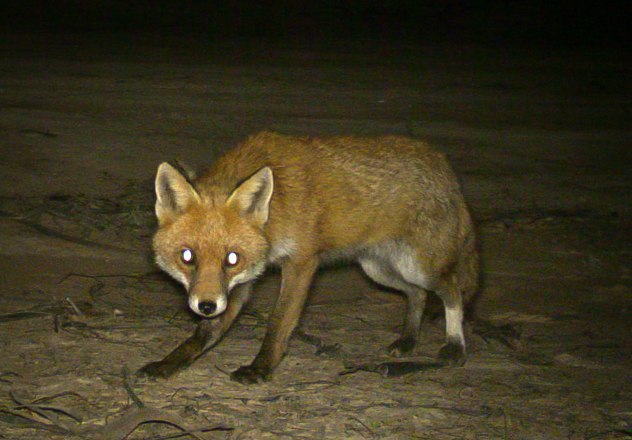Located on the Eyre peninsula, Dakalanta Wildlife Sanctuary protects a diverse range of ecosystems. This crucial habitat supports a large population of the Southern Hairy-nosed Wombat, as well as a number of other species that are declining elsewhere.


Dakalanta Wildlife Sanctuary protects over 13,600 hectares of the Eyre peninsula in South Australia. It forms an important connectivity area, strategically located at the southern boundary of Cocata Conservation Park and with other protected areas nearby forming part of the WildEyre Biolink program.
Dakalanta is located on the habitat ecotone between the mallee woodlands to the north and the grassy woodlands to the south.
The sanctuary supports a range of vegetation communities, including Mallee and Callitris woodland and Drooping She-oak grassy woodlands. It is home to a large population of the Southern Hairy-nosed Wombat, as well as several declining and regionally significant bird species.
Dakalanta is part of the Polda Basin, which has a shallow ground water aquifer that recharges when local rainfall percolates down through the limestone. The region experiences cool, wet winters and hot, dry summers, which are somewhat affected by the nearby ocean. The southern portion of the property consists of low rises and flats of calcrete with very shallow soils, areas of which were cleared of the original Drooping She-oak grassy woodlands (which is now a threatened ecological community on Eyre Peninsula and classified by the federal government as a Critically Endangered ecological community). The central and northern portion of the property supports more intact vegetation, on low sand ridges or shallow calcareous loam flats, both on the underlying calcrete sheet rock.
Dakalanta supports around 250 plant species, including a stunning array of mallee species and up to 10 species of small ground orchids. In the southern portion of the property are open grasslands (some of which have been cleared) with remaining areas of Drooping She-oak grassland, and along the edge of the grasslands in slightly deeper soils are Mallee Box woodlands. There are Native Pine woodlands (Southern Cypress Pine is increasing on the property due to reduced grazing pressure), low mallee woodlands with a spinifex understorey, as well as pockets of hollow-rich Redgum woodlands, and nectar-rich Swamp Paperbark shrublands.
Dakalanta Sanctuary protects a number of important species including a large population of the Southern Hairy-nosed Wombat, which is in decline across much of its range. Other notable mammals include the Western Pygmy Possum and the Little Long-tailed Dunnart.
Over 118 species of birds are confirmed or likely to occur on the property including the Peregrine Falcon, Scarlet-chested Parrot, Purple-gaped Honeyeater, Shy Heathwren and Restless Flycatcher. There is good habitat for Malleefowl, which occurs in the region.
AWC is developing a comprehensive land management strategy for Dakalanta, to address fire and weed management, feral animal control, and ecological monitoring. Current programs include:
 © AWC
© AWC
Wildlife at Dakalanta is under threat from loss of crucial habitat, and invasion by feral animals. Cats and foxes are a major threat across Australia, and prey directly on small mammals. Feral herbivores like rabbits and goats can be very destructive, and compete with native species for food and habitat. Often important habitat is already degraded from previous pastoral use. AWC is addressing these threats at Dakalanta through land management strategies like revegetation programs and the removal of feral animals.
AWC protects populations of the Southern Hairy-nosed Wombat at Yookamurra and Dakalanta Wildlife Sanctuaries.
Help us protect Australia’s threatened species
Donate Now